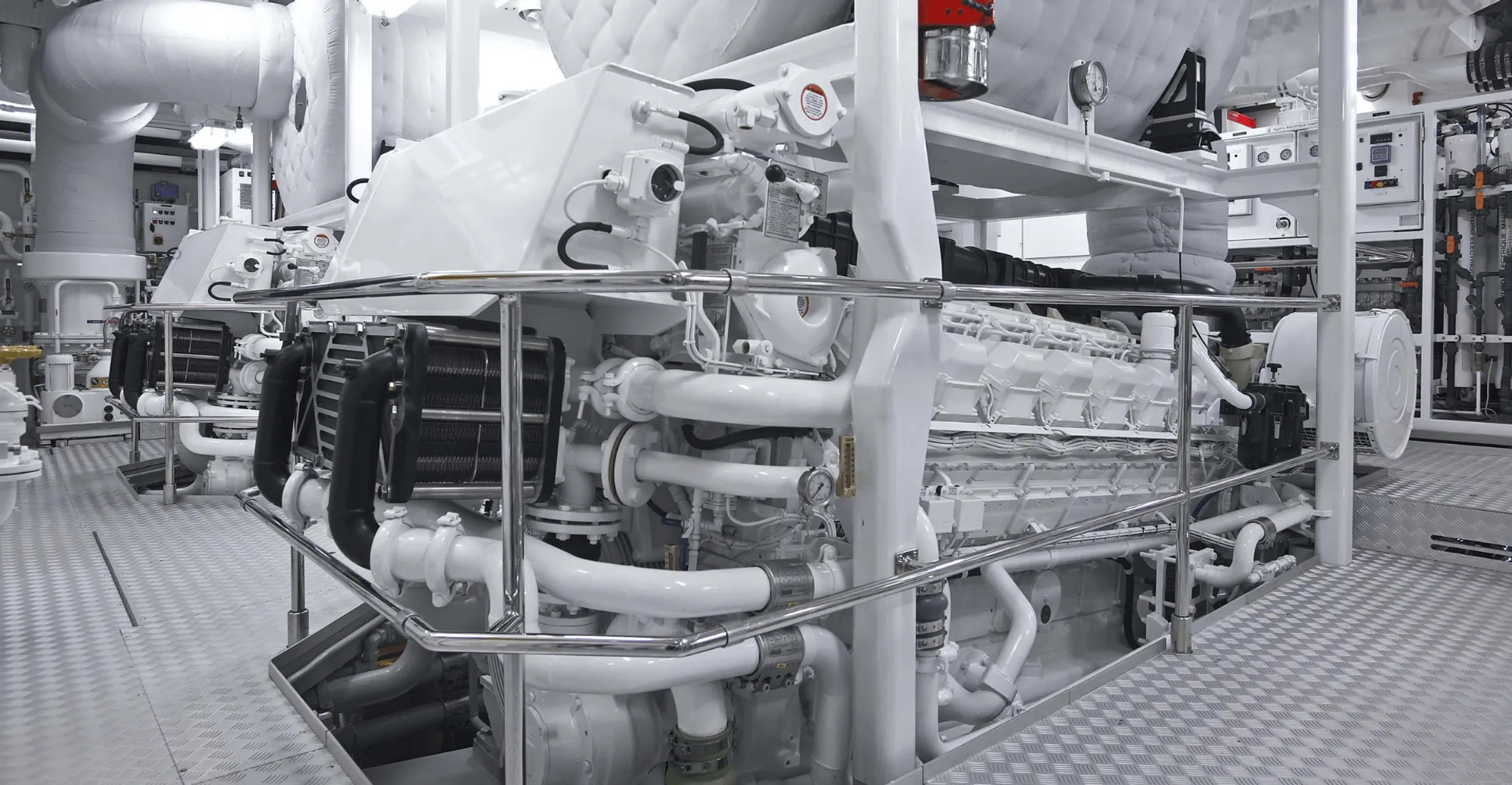
Choosing natural refrigerants | R134a
Choosing natural refrigerants: part 6
R134a
Natural refrigerants are a hot topic. With more and more onshore utility-based installations switching to natural gas, what’s the situation in the maritime industry? Selecting the right refrigerant is no easy task as each type has its own pros and cons. In this series of blogs we explore the most common natural refrigerants to help you decide which best suits your specific application.
We finalize these series about natural refrigerants with the HFC R134a. This way we can compare all the natural refrigerants with one of the mostly used synthetic refrigerant in the world. R134a was designed in the early nineties as a replacement of the much more harmful R-12. Although you wouldn’t say it now, it was really a big improvement back then with insignificant ozone depletion and an GWP that is almost a factor ten lower. R134a is mainly used in chillers.
To give you a comprehensive overview we are comparing every refrigerant on the following fixed set of properties:
| Thermodynamic properties | Safety | Sustainability |
| Temperatures | Flammability | GWP |
| Pressures | Toxicity | Ozone depletion |
| Latent heat capacity | Pressure | Energy efficiency |
| Corrosive |
All starting points are the same for every refrigerant, including the temperatures below:
Evaporation temperature: -10°C
Condensation temperature: 25°C
Overheating: 20K
Subcooling: 5K
![]()
Thermodynamic properties
R134a has pretty decent thermodynamic properties. With a broad temperature spectrum, relatively low working pressures and a good latent heat capacity, it is a great gas to use as a refrigerant for chilled water purposes.
Evaporation and condensation temperature
R134a has a high temperature range and with a critical point above 101°C can easily be used with seawater condensers. The triple point lies at -104°C.
- Evaporation and condensation pressure
The pressure rangers are low with an evaporating temperature of -10°C the absolute pressure is around 2 bar; at a condensation temperature of 25°C the absolute pressure is around 7 bar. - Latent heat capacity
Latent heat values are below average. The enthalpy at the -10°C line will be around 210 kJ/kg.
Safety
R134a is a very safe refrigerant with an ASHRAE safety classification of A1. It is not flammable and has very low toxicity levels.
|
Safety group |
Lower toxicity |
Higher toxicity |
| High flammability |
A3 |
B3 |
| Flammable |
A2 |
B2 |
| Lower flammability |
A2L |
B2L |
| No flame propagation |
A1 |
B1 |
- Flammability
Classified as A1, R134a has no flammability issues or whatsoever. - Toxicity
R134a is not toxic, however like all refrigerants it does displace oxygen in a confined space. Measures such as proper ventilation must be applied to avoid asphyxiation. - Pressure
R134a has no pressure issues. - Corrosion
Inhalation, eye and skin contact needs to be avoided, R134a is not corrosive for the installation’s materials.
Sustainability
In the nineties R134a became the replacement of the much more harmful refrigerant R12. While it has much lower GWP-values it still is sky high compared to modern synthetic and natural refrigerants.
- GWP & ozone depletion
With a global warming potential of 1430, the refrigerant R134a has a significant contribution to the greenhouse effect. R134a is an HFC, that means it has no chlorine molecule and therefore doesn’t deplete the ozone layer. - Energy efficiency
The energy efficiency depends on the design at specific temperatures. For an accurate comparison we used the same temperatures value for each refrigerant as specified above. Based on these conditions the EER is 4.4. This can be improved with smart system design.
Conclusion
The synthetic refrigerant R134a is used in chilled water systems, medium and high temperature refrigeration, as well as domestic refrigeration and transport refrigeration. Eventually it will be replaced by refrigerants with a lower GWP, which is more sustainable. However, R134a has not been banned yet, it is still used in many refrigeration systems.
Please note that the values and calculation given in this article have been simplified in order to give you a general overview of the pros and cons of this refrigerant. More specific information is needed for a detailed calculation and we strongly recommend contacting one of our engineers if you are considering the use of natural refrigerants.
Want to learn more about natural refrigerants? You can download our extensive whitepaper here.